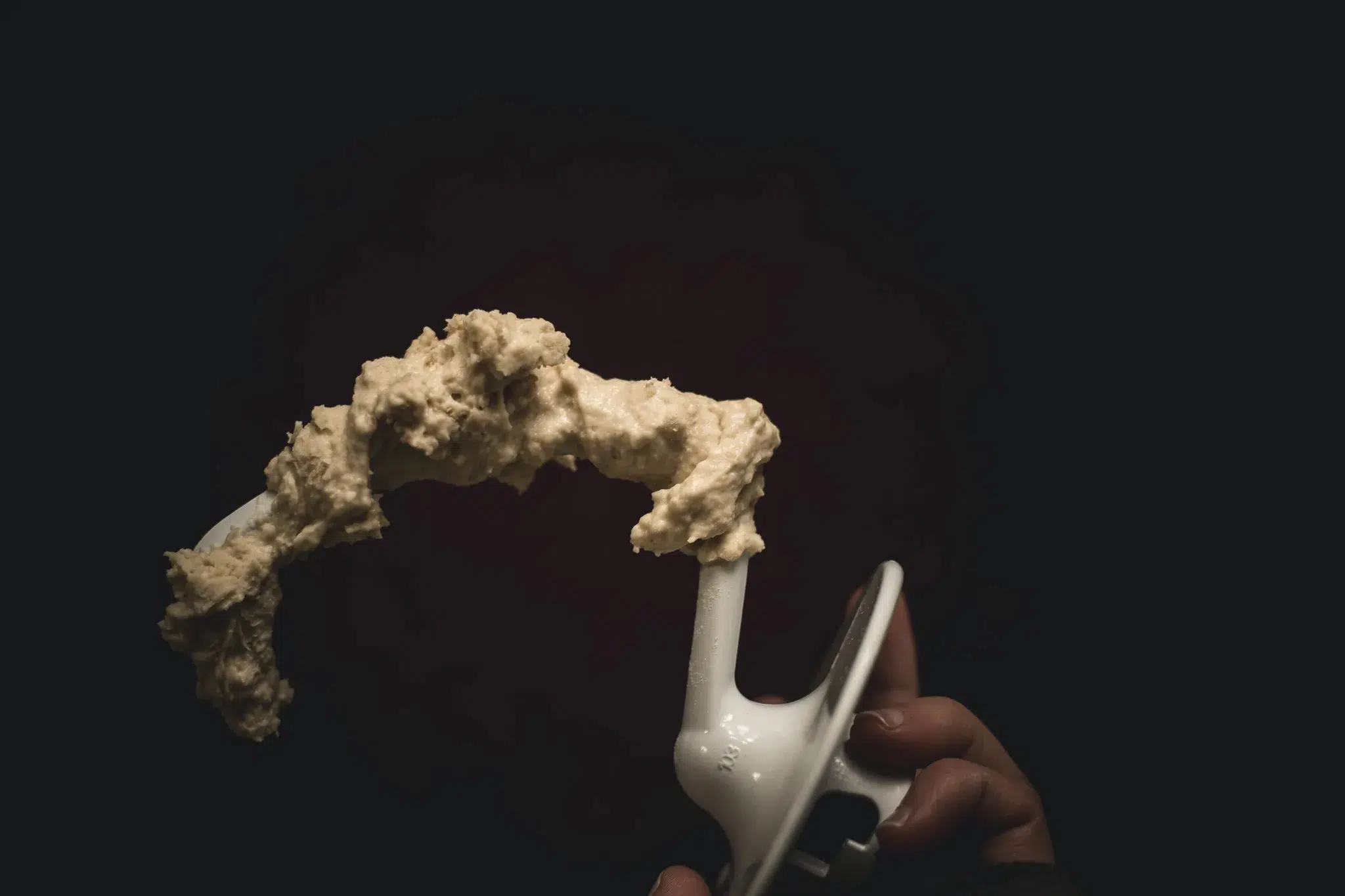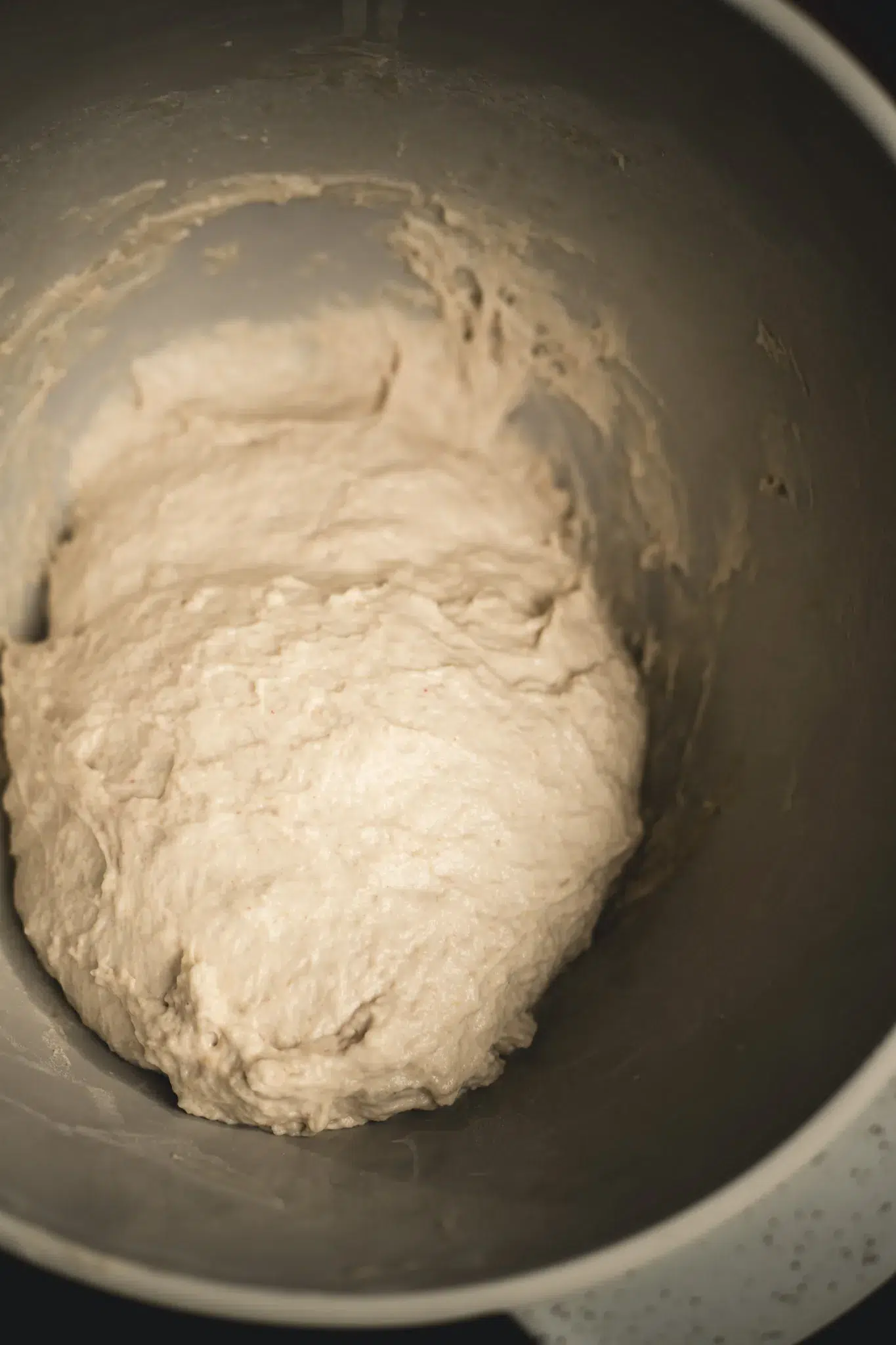
Autolyse sourdough is a bread term I didn’t understand when I first started baking. At the time, it seemed like an unnecessary step that made the whole process take longer unnecessarily. As I made more bread and started to understand more about the science behind the process, I discovered for myself that the autolyse could make my bread softer, fluffier, and easier to work with, I never skipped the step again.
Autolyse
Autolysing is the process of combining the flour, water, and starter and allowing the dough to hydrate before adding the salt.
This post may contain affiliate links, which means I make a small commission at no extra cost to you. You can view my Privacy Policy Here.
The science behind autolysing sourdough
As soon as water is added to flour, starch and proteins start to break down by the endogenous enzymes present. Salt changes the way dough ferments because it slows down the fermentation process, preventing the enzymes from eating the food source (flour and water) too quickly. Salt also dehydrates the dough slightly, drawing moisture out through osmosis. This process is necessary for elastic and flavorful sourdough. We autolyse sourdough without salt so that the enzymes have a chance to get started eating their food and the water can hydrate the flour before the salt can begin its own chemistry.
Why do we autolyse sourdough?
The flour fully hydrates when we autolyse, resulting in a soft and moist crumb.
Results are more elastic when we autolyse sourdough because of the kick start in gluten development.
Flavor development results from the lengthening of the fermentation process through autolysing sourdough.
Dough is easier to work with because of the increased gluten development and hydration of the flour. This means less kneading!
Results in bread that is even easier to digest because the gluten has been broken down and the fermentation process is lengthened.
Autolyse history lesson
Autolysing sourdough was developed by a French master baker, Professor Raymond Calvel. Through his experimentation, the professor discovered resting the dough before adding salt improved the extensibility of the dough as well as the links between the gluten, water, and starch. This means that when all the ingredients are combined and kneaded together, a smooth dough forms faster.
Historically, flour and water were left out in the open to attract wild yeasts and ferment before adding more flour, water, and salt. At some point, sourdough starters were kept and passed down from generation to generation, making the entire fermentation process faster and easier. At this point it became popular to create a levain (a small amount of ripe starter used to leaven the whole loaf). Now most people opt for an autolyse over making a levain to get the best of both worlds.
How to autolyse
If you’re including starter, it’s best to autolyse anywhere from 30 minutes to an hour as to avoid over-fermenting the dough. If you do not include starter, the flour can hydrate for up to 10 hours before you add starter and salt. I typically prefer to add starter to my autolyse and roughly mix the dough before letting it rest.
When to utilize the autolyse
I always autolyse my sourdough for at least 15 minutes every time I bake. Sometimes I let it rest longer if I have more time, but even 15 minutes is better than nothing! If I’m working with whole wheat flour, I like to autolyse sourdough without starter for several hours. This really helps a whole wheat dough to become easier to work with and yields a lighter, fluffier texture.
Recipes for autolysing sourdough

Autolysing sourdough is essential in the long fermentation process, building flavor and strength in the dough.
Freshly Ground Flour: Learn to Mill Your Own
When milling your flour, autolysing is a great tool to hydrate the flour and increase the elasticity of the dough.
How to Bake Same Day Sourdough
Another recipe where an autolyse packs a big punch since you’re fermenting the dough for so much less time.
Supplies for Autolysing Sourdough
You can autolyse sourdough with the most basic set up, but having a few of these tools makes things so much easier!
Stand mixer -This is the one we have and absolutely love
Fermentation bowl- I have this ceramic one and the glass one both come with lids and are perfect for mixing and fermenting your dough!
Organic, unbleached flour -You can also mill your own!
Filtered water-Anytime you autolyse sourdough, filtered water is essential for optimal fermentation
High quality mineral salt-for the best flavor and nutritional benefits
Leave a Reply